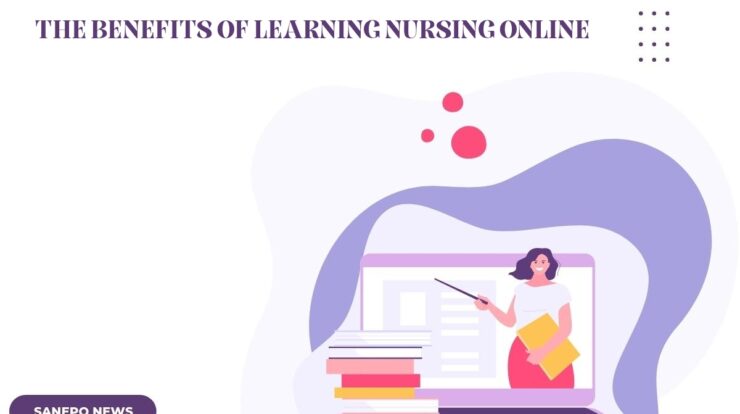
Hello there! Are you curious to know the ins and outs of developing an online learning platform? Well, you've come to the right place! In this article, we will dive into the fascinating world of online education and explore the costs involved in bringing a virtual learning platform to life. Whether you're an educator looking to transition to the digital realm or an entrepreneur planning to disrupt the e-learning industry, understanding the financial aspects of building an online learning platform is crucial. So, let's embark on this informative journey and unravel the mysteries behind the cost of developing an online learning platform!
The Importance of Developing an Online Learning Platform
As the world becomes more digitally advanced, the importance of developing an online learning platform has become increasingly evident. Online learning offers numerous advantages over traditional classroom-based education. It provides flexibility, convenience, and accessibility to a wide range of learners, giving them the opportunity to study at their own pace and location.
Advantages of Online Learning
Online learning has revolutionized the education industry by offering several unique benefits. Firstly, it allows learners to create their own schedules and study at their own convenience. Whether it's a student juggling multiple responsibilities or a working professional seeking to enhance their skills, online learning provides the flexibility to fit education into their busy lives.
Moreover, online learning breaks down geographical barriers. Students can access courses and educational resources from anywhere in the world, eliminating the need to relocate or commute to a physical institution. This improves accessibility, particularly for individuals in remote areas or those with limited transportation options.
Another advantage is the wide range of courses available online. Learners can choose from an extensive variety of subjects, including niche topics that may not be offered in traditional educational institutions. This allows individuals to pursue their specific interests and tailor their educational experience to their unique needs and goals.
Increasing Demand for Online Education
The COVID-19 pandemic has accelerated the demand for online learning platforms. With social distancing measures and lockdowns in place, educational institutions were forced to quickly transition to remote learning models. This shift highlighted the critical need for robust and effective online learning platforms that can facilitate uninterrupted education.
Furthermore, online learning provides a safe alternative during times of crisis. It allows learners to continue their education from the comfort and safety of their homes, reducing the risk of exposure to infectious diseases. This adaptability and resilience make online learning platforms essential in ensuring continuous access to education, regardless of external circumstances.
Benefits for Educational Institutions
The benefits of developing an online learning platform extend beyond learners. Educational institutions themselves can greatly benefit from embracing online education. Firstly, it offers an opportunity to expand their reach and attract a wider pool of students. By removing geographical limitations, institutions can tap into international markets and attract learners from different parts of the world.
Developing an online learning platform also allows educational institutions to provide innovative teaching methods and enhance the overall learning experience. They can incorporate multimedia elements, interactive assessments, and collaborative tools to create engaging and effective learning environments. This flexibility in teaching methods opens up avenues for creativity and experimentation, resulting in improved learning outcomes.
Additionally, online learning platforms provide valuable data and analytics to educational institutions. They can track student progress, identify areas of improvement, and personalize learning experiences based on individual needs. This data-driven approach helps institutions tailor their educational offerings and support students more effectively.
In conclusion, the importance of developing an online learning platform cannot be overstated. Online learning offers flexibility, accessibility, and convenience that traditional education often lacks. The increasing demand for online education, coupled with the benefits it brings to learners and educational institutions alike, makes it an indispensable tool in shaping the future of education.
Factors Impacting the Cost of Developing an Online Learning Platform
Developing an online learning platform involves various factors that can impact the overall cost of the project. Understanding these factors is essential for budgeting and planning purposes. Below are the key elements that can influence the cost of developing an online learning platform:
Platform Features and Functionality
The features and functionality offered by an online learning platform play a significant role in determining its development cost. The more advanced and interactive features the platform incorporates, the higher the expenses may be. For example, if the platform includes interactive video lessons, progress tracking, discussion forums, and personalized learning paths, the cost of development will increase. These features require specialized programming, integrations, and testing to ensure seamless functionality. Consequently, it is important to consider the desired features and functionality carefully to balance the cost with the intended user experience and learning outcomes.
Content Creation and Management
Creating high-quality educational content is a vital component of any online learning platform. This includes developing videos, presentations, quizzes, and other educational resources. Investing in instructional design, multimedia development, and content management systems (CMS) can significantly impact the development cost. Instructional designers work closely with subject matter experts to design effective and engaging educational content. Multimedia developers, on the other hand, are responsible for creating visually appealing and interactive learning materials. Additionally, implementing a robust content management system is crucial for organizing and delivering the content efficiently. Developing or integrating a CMS requires specialized expertise, which can contribute to the overall cost of the platform.
User Interface Design and User Experience
The design and usability of an online learning platform greatly influence its success and user engagement. Investing in user interface (UI) design and user experience (UX) is crucial to ensure a seamless and enjoyable learning experience for students. This may involve hiring experienced UX/UI designers who can create intuitive and visually appealing interfaces. The design process includes wireframing, prototyping, and iterative testing to optimize the platform's usability and navigation. Customizing the user interface to align with the branding and identity of the institution or organization also adds to the overall cost. Therefore, incorporating high-quality UI design and UX practices can contribute to the development expenses of the online learning platform.
In conclusion, the cost of developing an online learning platform is influenced by factors such as platform features and functionality, content creation and management, and user interface design and user experience. Careful consideration of these factors, along with the desired learning outcomes and budgetary constraints, is crucial for successfully planning and executing the development process.
Cost Components in Developing an Online Learning Platform
Developing an online learning platform involves several cost components that contribute to the overall investment required. In this article, we will discuss the key factors that contribute to the cost of developing such a platform.
Technology Infrastructure
One of the significant cost components in developing an online learning platform is establishing a robust technology infrastructure. This includes setting up servers, databases, and implementing security measures to ensure the platform functions smoothly and securely.
Investing in high-quality servers that can handle heavy traffic and database requirements is essential. Additionally, implementing robust security measures such as firewalls, encryption, and secure user authentication systems are crucial to protect sensitive user data.
Development Team and Expertise
The expertise and skills of the development team play a vital role in the cost of developing an online learning platform. Hiring skilled developers, instructional designers, and project managers with expertise in e-learning can significantly impact the overall development cost.
Experienced developers who have worked on similar platforms in the past will have a better understanding of the technical requirements and can develop the platform efficiently. Instructional designers are essential as they can create engaging and effective learning content while project managers ensure the smooth coordination and timely completion of the development process.
However, hiring such specialized professionals can be costly. Their expertise and experience command higher salaries. Companies need to allocate a considerable portion of their budget to recruit and retain the right talent.
Maintenance and Support
Once the online learning platform is developed and launched, ongoing maintenance, updates, and technical support are necessary to keep it running smoothly. This adds to the overall cost of developing the platform.
Regular maintenance involves monitoring and troubleshooting any issues that may arise, ensuring the platform's optimal performance. Updates may be required to introduce new features, improve user experience, or address any security vulnerabilities that may arise over time.
Technical support is crucial to provide assistance to users, address their queries, and resolve any technical issues they may encounter while using the platform. This requires allocating resources or outsourcing technical support services, which can contribute to the overall cost of maintaining the platform.
In conclusion, developing an online learning platform involves several cost components. Investing in a robust technology infrastructure, hiring a skilled development team, and allocating resources for ongoing maintenance and support are crucial aspects that contribute to the overall cost. Proper planning and budget allocation for these components are essential to ensure the successful development and operation of an online learning platform.
Cost Saving Strategies in Online Learning Platform Development
Open-Source Solutions
One cost-saving strategy in the development of an online learning platform is exploring open-source learning management systems or tools. By opting for open-source solutions, organizations can save costs on software licenses and development. These systems are typically highly customizable and scalable, allowing for flexibility in creating an online learning platform that meets specific needs.
Content Collaboration and Repurposing
A productive way to reduce the cost and time required for content creation in an online learning platform is through collaborating with educators, institutions, or content providers. By sharing or repurposing existing educational materials, organizations can tap into a vast array of resources without having to start from scratch. This collaborative effort not only saves costs but also allows for different perspectives and expertise to enrich the learning experience for students.
Cloud-Based Infrastructure
Utilizing cloud-based infrastructure and services is another effective cost-saving strategy in online learning platform development. By hosting and storing the platform on the cloud, organizations can significantly reduce the initial investment required for physical servers and infrastructure. Additionally, cloud-based solutions provide scalability and flexibility, allowing the platform to adjust seamlessly to changing user demands. With ongoing maintenance costs also minimized, organizations can allocate their resources more efficiently towards enhancing the learning experience.
Conclusion: Achieving a Cost-Effective Online Learning Platform
Striking a Balance
When it comes to developing an online learning platform, it is essential to strike a balance between the desired features, functionality, and user experience, all within the confines of the available budget. Finding this equilibrium is crucial in creating a cost-effective solution that meets the needs of both the learners and the facilitators.
Investing in Quality
While implementing cost-saving strategies is important, it is equally important to invest in different aspects of the online learning platform that contribute to its overall quality. One of the key areas where investment is crucial is in creating high-quality content. The learning material provided to the students should be engaging, informative, and tailored to meet their educational needs. This not only enhances their learning experience but also ensures that the platform stands out from its competitors.
Furthermore, user interface design plays a crucial role in attracting and retaining learners. Investing in a clean and intuitive interface that is visually appealing and easy to navigate can significantly enhance the overall user experience.
Lastly, having a skilled development team is essential in order to create a robust online learning platform. These experts possess the technical know-how to implement features and functionalities efficiently, ensuring that the platform runs smoothly and delivers a seamless learning experience.
Long-Term Growth and Adaptability
The development of an online learning platform should not be seen as a standalone project, but rather as a long-term investment. It is crucial to anticipate the evolution of the educational landscape and build a platform that can adapt to future changes in the industry.
By designing the platform with scalability in mind, it becomes easier to accommodate the growth of user base, the addition of new features, and the integration of emerging technologies. This flexibility allows the platform to remain relevant and effective in meeting the ever-changing demands of learners and facilitators.
In conclusion, achieving a cost-effective online learning platform requires finding a balance between desired features and available budget, investing in quality content and user interface design, and ensuring long-term growth and adaptability. By carefully considering these factors, organizations can develop a platform that not only delivers a high-quality learning experience but also provides a solid foundation for future enhancements and innovations.






